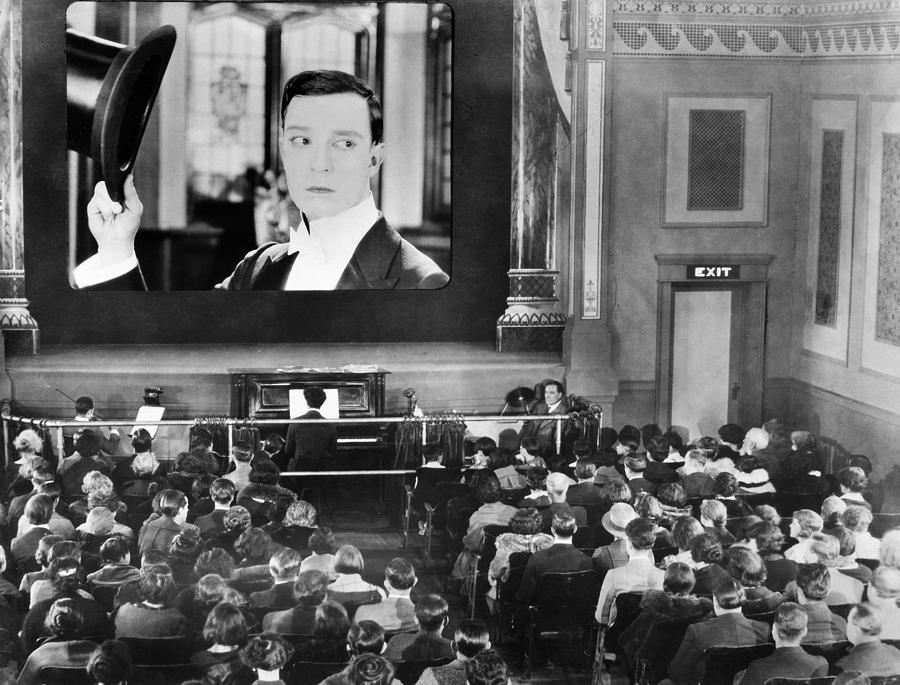What Do We Value?
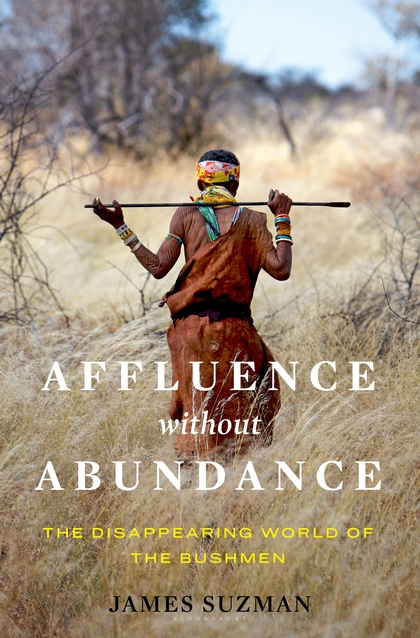 Sorry for not posting yesterday. I had a doctor’s appointment, then a friend stopped by and we got to talking, and then, after being inspired by an article in the New York Times, I started reading: Affluence Without Abundance: The Disappearing World of the Bushmen, by James Suzman. And then I couldn’t stop.
Sorry for not posting yesterday. I had a doctor’s appointment, then a friend stopped by and we got to talking, and then, after being inspired by an article in the New York Times, I started reading: Affluence Without Abundance: The Disappearing World of the Bushmen, by James Suzman. And then I couldn’t stop.
Here are some of the passages that grabbed my attention:
“Ju/’hoansi [bushmen] spend only 15 hours a week securing their nutritional requirements and only a further 15 to 20 hours per week on domestic activities that could be loosely described as ‘work.'”
“A good case can be made that hunters and gatherers work less than we do and that, rather than a continuous travail, the food quest is intermittent, leisure abundant, and there is a greater amount of sleep in the daytime per capita per year than in other conditions of society.”
“What was special about the Bushman data was that it showed that they coped easily with relative scarcity and that they had mastered the art of not obsessing about whether the grass was greener on the other side, which–given that they lived in one of the world’s oldest deserts–almost certainly was the case.”
“[The perspective of the Ju/’hoansi as a result of their introduction to modern society] brings the difference between foraging and production cultures–like our own–into vivid if sometimes uncomfortable relief. It reveals how our sense of time shapes and is shaped by our economic thinking; why, despite our obsession with celebrity and leadership, we take such pleasure in seeing the successful stumble and why we object so viscerally to inequality when we feel ourselves to be the victims of it.
“It also invites us to query how, why, and to what we ascribe value; how we understand affluence, satisfaction, and success; and how we define development, growth and progress. Perhaps most importantly it reveals how much of our contemporary economic and culture behavior–including the conviction that work gives structure and meaning to our lives, defines who we are, and ultimately empowers us to master our own destinies–is a legacy from our transformation from hunting and gathering to farming.”
Much Easier!
 Ajahn Amaro writes: I once met a Wall Street lawyer who had started practicing meditation some half a dozen years previously. She said: “Until I started to meditate it was one conflict after another, and life was one ongoing struggle. But since I began meditating, my relationships have become much more easeful and my working situation is more relaxed, though I’m still working with the same company and I live with the same people.”
Ajahn Amaro writes: I once met a Wall Street lawyer who had started practicing meditation some half a dozen years previously. She said: “Until I started to meditate it was one conflict after another, and life was one ongoing struggle. But since I began meditating, my relationships have become much more easeful and my working situation is more relaxed, though I’m still working with the same company and I live with the same people.”
It was if she thought: “This magical visitation has come into my life and taken all my troubles away!”
I said: “This isn’t really very magical. It’s more like: you used to get from one room to another by smashing yourself against the wall until you broke through it, and then suddenly you noticed that it’s much easier to go through the doorway. It’s not magic, it’s noticing where the gaps are and aiming for them, rather than just putting your head down and pounding with it until the wall breaks or you fall down unconscious.”
I think she was a little startled, perhaps because she had some internal story about how the devas were helping her and how magical things were.
But often when we apply plain ol’ mindfulness and activate this capacity to be spacious, to see things in context, they open up. Life becomes a lot more easeful and we can find ways to deal with the conflicts, difficulties and apparently intractable situations that we face. We find ways to work with them that surprise us.
It can seem miraculous, but it’s often merely a matter of allowing more spaciousness, a radical acceptance based upon a quality of listening, into the mixture.
So Now I’m Totally into Pali!
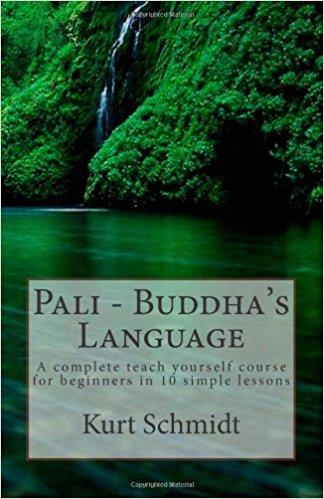 I’m still feeling the effects of taking that course on Vedana, at the Barre Center for Buddhist Studies, where Akincano really opened my eyes to the benefits of comparing several different translations of the same sutta — including jumping in and looking at the original Pali!
I’m still feeling the effects of taking that course on Vedana, at the Barre Center for Buddhist Studies, where Akincano really opened my eyes to the benefits of comparing several different translations of the same sutta — including jumping in and looking at the original Pali!
I’ve even started working my way through a surprisingly readable — and enjoyable! — little book: Pali–Buddha’s Language: A Complete Teach Yourself Course for Beginners in 10 Simple Lessons, by Kurt Schmidt, which includes a website with audio recordings of the Pail lessons that students are encouraged to (STRONGLY encouraged to) memorize.
So I’m doing it!
Starting with this very famous verse from the Dhammapada (Dhp. 5), which Gil Fronsdal translates as:
Hatred never ends through hatred.
By non-hate alone does it end.
This is an ancient truth.
Which Kevin Trainor translates as:
For hatred does not cease by hatred at any time:
hatred ceases by love, this is an old rule.
And Ajahn Sujato translates as:
Hatred is never appeased by hatred in this world. By non-hatred alone is hatred appeased. This is a law eternal.
Here’s the original Pali, with word-for-word translation from the book by Kurt Schmidt:
Na hi verena verani
Not namely through-enmity enmities
sammat’ idha kudacanam
stop here ever
a-verena ca sammanti
through-non-enmity and they stop
esa dhammo sanantano.
this Law (is) eternal.
***
I think this is really cool. So OK. I confess. I’m a total sutta geek!
Are You Comfortable and Alert?
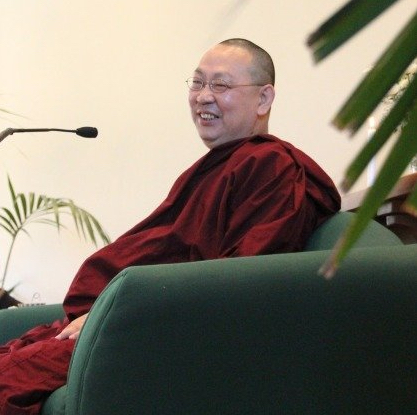 When I was in Burma a few years ago, I stayed at ShweOoMin monastery and met with the meditation master there, Sayadaw U Tejaniya (pictured), who impressed me in many ways, not the least of which was the deep tenderness I could hear in his voice every morning in the meditation hall. He spoke in Burmese, so I have no idea what he was actually saying, but he seemed to be soothing us — caressing us, even — the way a mother would sooth and caress a small child. (There, there sweetheart. It’s OK. Don’t worry. I’m here.)
When I was in Burma a few years ago, I stayed at ShweOoMin monastery and met with the meditation master there, Sayadaw U Tejaniya (pictured), who impressed me in many ways, not the least of which was the deep tenderness I could hear in his voice every morning in the meditation hall. He spoke in Burmese, so I have no idea what he was actually saying, but he seemed to be soothing us — caressing us, even — the way a mother would sooth and caress a small child. (There, there sweetheart. It’s OK. Don’t worry. I’m here.)
So I was delighted when I saw he has a new book out, titled When Awareness Becomes Natural. I’ve just started reading it and I love it already. I can “hear” the tenderness I remember so well, but also the very direct, down-to-earth instructions he gave, when he spoke in English to our little Spirit Rock group.
Here’s a sample from the book:
“The first instruction I will give a yogi who is new to this practice is to relax and be aware, to not have any expectations or to control the experience, and to not focus, concentrate or penetrate. Instead what I encourage him or her to do is observe, watch, and be aware, or pay attention.
“In this practice it is important to conserve energy, so you can practice continually. If the mind and body are getting tired and tense, then you are putting too much energy into the practice. Check your posture; check the way you are meditating. Are you comfortable and alert?
“You may not have the right attitude. Do you want something out of the practice? If you are looking for a result or want something to happen, you will only tire yourself. It is so important to know whether you are feeling tense or relaxed; check in repeatedly throughout the day; this also applies to daily practice at home or at work.
“If you don’t do this, tension will grow. Whether you are tense or relaxed, observe how you are feeling; observe the reactions. When you are relaxed, it is much easier to be aware; not so much effort is required, and it become an enjoyable, pleasant, and interesting experience.”
***
Check it out for yourself!
Go On….
Getting Closer
by Mark Nepo
Go on, the voices say, part the veil.
Not with your hands. Hands will only
tangle the hours like a net. Get closer.
So you can part the veil with your breath.
The world keeps moving in on itself. It’s
what it does. Cobwebs. Opinions. Moss.
Worries. Dirt. Leaves. History. Go on. Put
them down and get real close. Open your
mouth and inhale all the way to the begin-
ning, which lives within us, not behind us.
Then wait. When something ordinary starts
to glow, we are getting closer. When the light
off the river paints the roots of that old willow
just as you pass, the world is telling you to
stop running. Forget what it means, just
stop running. When the moon makes you
finger the wet grass, the veil is parting.
When the knot you carry is loosened,
the veil is parting. When you can’t help
but say yes to all that is waiting, the
veil is parting.
I Hereby Pledge Myself
I’ve recently finished reading The Words & Wisdom of Charles Johnson, which I have been savoring since taking it up after Charles Johnson himself met with us as part of the CDL (Community Dharma Leader) program (where I was wowed by his brilliance, his ease, and the dignity of his presence.)
The book is a collection of essays, the last of which is a reflection on the “Commitment Form” that was used during the Civil Rights Movement. Johnson writes:
“…Martin Luther King Jr. said that in the black liberation struggle we always have to work on two fronts, one public and the other private, one external and one internal. One effort is to constantly improve the social world; the other is to constantly improve ourselves. Both efforts are necessary; they reinforce and strengthen each other…
“The men and women of the Civil Rights Movement worked out the Commitment Form, which nicely complements Mahatma Gandhi’s vision of satyagraha, in practice as they moved from one campaign to another in the south. This form(ula), this insight, was fully developed by the time of the electrifying Birmingham campaign in 1963. Men and women, and their children filled the jails of “Bull” Conner in a massive act of civil disobedience. They–and all volunteers–were asked to sign this document, which is as follows:
“Commandments for Volunteers
I hereby pledge myself–my person and body–to the nonviolent movement. Therefore, I will keep the following commandments:
- Meditate daily on the teachings and life of Jesus. [my edit: Meditate daily.]
- Remember always that the non-violent movement seeks justice and reconciliation–not victory.
- Walk and Talk in the manner of love, for God is love.
- Pray daily to be used by God in order that all men might be free. [my edit: Set the intention daily that my efforts be directed to the liberation of all beings.]
- Sacrifice personal wishes in order that all men might be free. [my edit: that all beings might be free.]
- Observe with both friend and foe the ordinary rules of courtesy.
- Seek to perform regular service for others and for the world.
- Refrain from the violence of fist, tongue, or heart.
- Strive to be in good spiritual and bodily health.
- Follow the directions of the movement and of the captain on a demonstration. [my edit: Follow wise counsel.]
“I sign this pledge, having seriously considered what I do and with the determination and will to persevere. Name:_____________________
“…This was not simply a pledge for civil disobedience. This was a grand vision in which the personal and the political were one, a blueprint for how to live… I say all this as a Buddhist who has taken formal vows, the Precepts, as a lay person. (My very Christian wife of 41 years once said that she saw me as being like a Unitarian, someone always looking for the beauty and best in the world’s religions and science, and I guess she was right about that.)…
“Why don’t you, dear reader, print this off right now, and sign it. You’ll feel good, if you do. And M.L.King, wherever he is, will thank you for doing that.”
***
I have printed it off (with my edits) and signed it. And I do feel good! (I also hope M.L.King, wherever he is, will not take offense.)
Silence Taunts
The Universe: Original Motion Picture Soundtrack
by Tracy K. Smith
The first track still almost swings. High hat and
snare, even
A few bars of sax the stratosphere will singe-out
soon enough.
Synthesized strings. Then something like
cellophane
Breaking in as if snagged to a shoe. Crinkle and
drag. White noise,
Black noise. What must be voices bob up, then
drop, like metal shavings
In molasses. So much for us. So much for the
flags we bored
Into planets dry as chalk, for the tin cans we
filled with fire
And rode like cowboys into all we tried to tame.
Listen:
The dark we’ve only ever imagined now audible,
thrumming,
Marbled with static like grisly meat. A chorus of
engines churns.
Silence taunts: a dare. Everything that disap-
pears
Disappears as if returning somewhere.
Go-To Guy
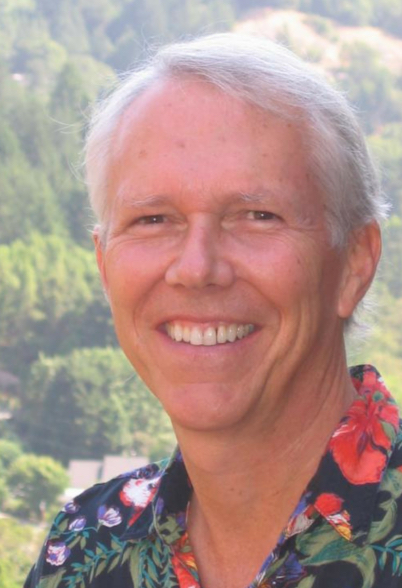 Guy Armstrong is one of my favorites. He was one of the teachers I met with one-on-one every week during my first long retreat (6-weeks at IMS in 2013) and also during the first half of the 2-month retreat I sat this year at Spirit Rock. He’s a member of the Spirit Rock Teachers Council and a guiding teacher at the Insight Meditation Society. (He’s also one of my “go-to” guys when I want a dharma talk I can listen to over and over again — along with Ajahn Sucitto, Phillip Moffitt, Akincano, and maybe one or two others.)
Guy Armstrong is one of my favorites. He was one of the teachers I met with one-on-one every week during my first long retreat (6-weeks at IMS in 2013) and also during the first half of the 2-month retreat I sat this year at Spirit Rock. He’s a member of the Spirit Rock Teachers Council and a guiding teacher at the Insight Meditation Society. (He’s also one of my “go-to” guys when I want a dharma talk I can listen to over and over again — along with Ajahn Sucitto, Phillip Moffitt, Akincano, and maybe one or two others.)
So I am delighted to announce that he’ll be teaching an 8-week online course — Emptiness: A Practical Course for Meditators — which will include live video chats with him. The course is based on his new book, Emptiness: A Practical Guide for Meditators, and will “explore the teachings on emptiness and their application in our ives in a way that makes them practical and accessible.”
It’s a production of Wisdom publications in partnership the Barre Center for Buddhist Studies. The course begins Sept 11. If you register before Aug 5, the cost is $149. ($199 after Aug 5) Click here for more info.
What Stays With Us
 Back in the days when I had a prestigious corporate job and therefore lots of disposable income (as well as the nagging sense that somehow even that was not the “it” I had thought it would be), I happened to read Annie Dillard’s account of her experience during a total eclipse of the sun, and right then I started making plans to travel to wherever I needed to go to be able to see it for myself (which, at the time, was somewhere in Europe). But then things happened and I couldn’t go, and then other things happened and I couldn’t go again (I think the eclipse was in Hawaii that time), and then more things happened and finally I stopped being in a financial position to be able to do stuff like that.
Back in the days when I had a prestigious corporate job and therefore lots of disposable income (as well as the nagging sense that somehow even that was not the “it” I had thought it would be), I happened to read Annie Dillard’s account of her experience during a total eclipse of the sun, and right then I started making plans to travel to wherever I needed to go to be able to see it for myself (which, at the time, was somewhere in Europe). But then things happened and I couldn’t go, and then other things happened and I couldn’t go again (I think the eclipse was in Hawaii that time), and then more things happened and finally I stopped being in a financial position to be able to do stuff like that.
But I never forgot what Annie Dillard wrote.
And now, the eclipse is going to be happening right here where I live! Right over my house!
This time, I won’t miss it.
Here’s an except from Annie Dillard’s account:
“I had seen a partial eclipse in 1970. A partial eclipse is very interesting. It bears almost no relation to a total eclipse. Seeing a partial eclipse bears the same relation to seeing a total eclipse as kissing a man does to marrying him, or as flying in an airplane does to falling out of an airplane. Although the one experience precedes the other, it in no way prepares you for it. During a partial eclipse the sky does not darken–not even when 94 percent of the sun is hidden. Nor does the sun, seen colorless through protective devices, seem terribly strange. We have all seen a sliver of light in the sky; we have all seen the crescent moon by day. However, during a partial eclipse the air does indeed get cold, precisely as if someone were standing between you and the fire. And blackbirds do fly back to their roosts. I had seen a partial eclipse before, and here was another…
“What you see before your eyes is the sun going through phases. It gets narrower and narrower, as the waning moon does, and, like the ordinary moon, it travels alone in the simple sky. The sky is of course background. It does not appear to eat the sun; it is far behind the sun. The sun simply shaves away; gradually, you see less sun and more sky….
“The sky’s blue was deepening, but there was no darkness. The sun was a wide crescent, like a segment of tangerine. The wind freshened and blew steadily over the hill. The eastern hill across the highway grew dusky and sharp. The towns and orchards in the valley to the south were dissolving into the blue light. Only the thin river held a trickle of sun.
“Now the sky to the west deepened to indigo, a color never seen. A dark sky usually loses color. This was a saturated, deep indigo, up in the air. Stuck up into that unworldly sky was the cone of Mount Adams, and the alpenglow was upon it. The alpenglow is that red light of sunset which holds out on snowy mountaintops long after the valleys and tablelands are dimmed. ‘Look at Mount Adams,’ I said, and that was the last sane moment I remember.
“I turned back to the sun. It was going. The sun was going, and the world was wrong. The grasses were wrong; they were platinum. Their every detail of stem, head, and blade shone lightless and artificially distinct as an art photographer’s platinum print. This color never has been seen on earth. The hues were metallic; their finish was matte. The hillside was a nineteenth-century tinted photograph from which the tints had faded. All the people you see in the photograph, distinct and detailed as their faces look, are now dead. The sky was navy blue. My hands were silver. All the distant hills’ grasses were finespun metal which the wind laid down. I was watching a faded color print of a movie filmed in the Middle Ages; I was standing in it, by some mistake. I was standing in a movie of hillside grasses filmed in the Middle Ages. I missed my own century, the people I know, and the real light of day…
“People on all the hillsides, including, I think, myself, screamed when the black body of the moon detached from the sky and rolled over the sun. But something else was happening at the same instant, and it was this, I believe, which made us scream.
“The second before the sun went out we saw a wall of dark shadow come speeding at us. We no sooner saw it than it was upon us, like thunder. It roared up the valley. It slammed our hill and knocked us out. It was the monstrous swift shadow cone of the moon. I have since read that this wave of shadow moves 1,800 miles an hour. Language can give no sense of this sort of speed–1,800 miles an hour. It was 195 miles wide. No end was in sight–you saw only the edge. It rolled at you across the land at 1,800 miles an hour, hauling darkness like plague behind it….
“Less than two minutes later, when the sun emerged, the trailing edge of the shadow cone sped away. It coursed down our hill and raced eastward over the plain, faster than the eye could believe; it swept over the plain and dropped over the planet’s rim in a twinkling. It had clobbered us, and now it roared away. We blinked in the light. It was as though an enormous, loping god in the sky had reached down and slapped the earth’s face….
“When the sun appeared as a blinding bead on the ring’s side, the eclipse was over. The black lens cover appeared again, backlighted, and slid away. At once the yellow light made the sky blue again; the black lid dissolved and vanished. The real world began there. I remember now: we all hurried away. We were born and bored at one stroke. We rushed down the hill. We found our car; we saw the other people streaming down the hillsides; we joined the highway traffic and drove away.
“We never looked back. It was a general vamoose, and an odd one, for when we left the hill, the sun was still partially eclipsed–a sight rare enough, and one which, in itself, we would probably have driven five hours to see. But enough is enough. One turns at last even from glory itself with a sigh of relief. From the depths of mystery, and even from the heights of splendor, we bounce back and hurry for the latitudes of home.”
I Am Not Exempt
My apologies for not posting yesterday, but I was having surgery to remove a spot of skin cancer (not melanoma) that had returned. This was not an especially traumatic event, but it did give me pause.
Maybe that’s why last night I chose to listen to this talk by Joseph Goldstein titled: Deepening Insight into Permanence. It’s an excellent teaching on these 3 reflections:
Whatever is of the nature to grow old, will grow old. I am not exempt.
Whatever is of the nature to fall ill, will fall ill. I am not exempt.
Whatever is of the nature to die, will die. I am not exempt.



